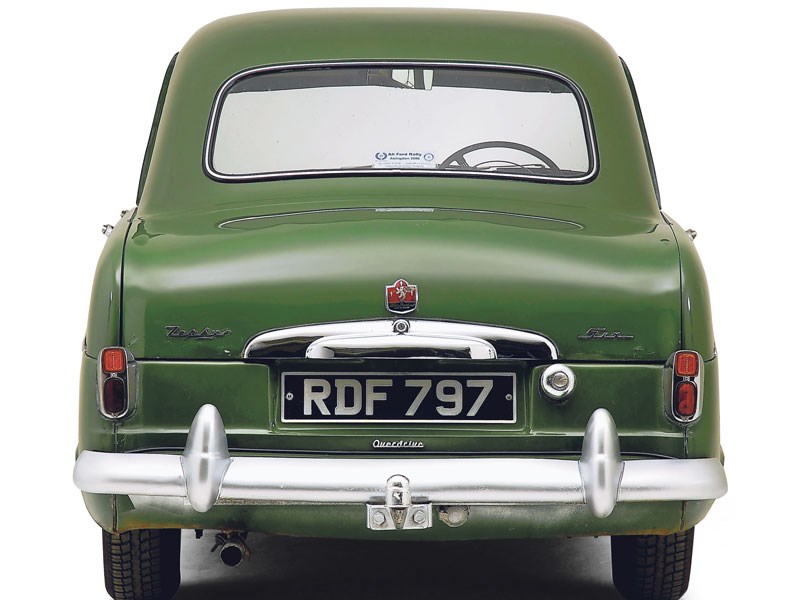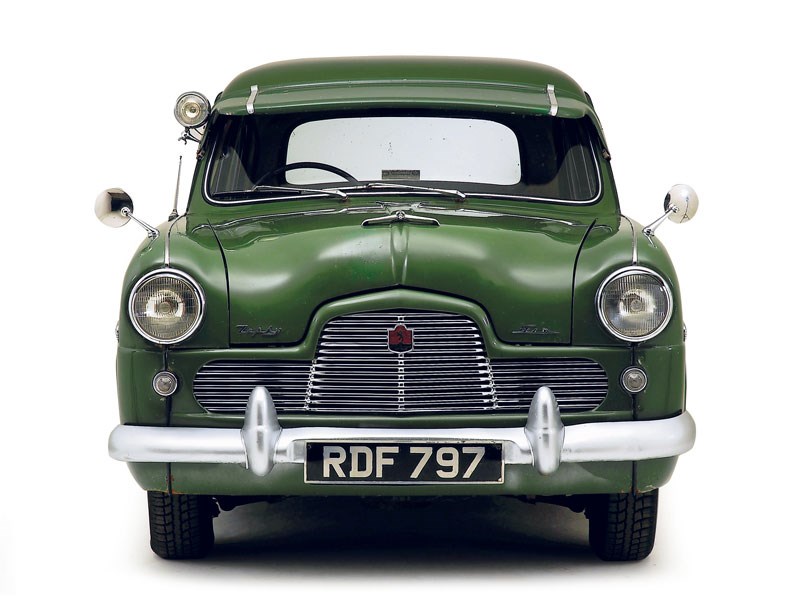The MkI Zephyr brought unitary bodies to Ford...
With only around 70bhp to call on, the Zephyr is no ball of fire on the open road, but you won’t struggle to keep up with modern traffic. In any case, this car is all about style, something it has in abundance. The simple but charming cabin is a fine place to be with plenty of room, a good driving positionand nicely weighted controls. A well-maintained example should start quickly and settle to a smooth tickover, and while the 2.2-litre engine gets vocal when pressed, long-distance refinement is more than acceptable. An ability to cover plenty of miles in comfort is one of the Zephyr’s biggest plus points, while a smooth ride and secure handling inspire confidence if you do want to make full use of the power on offer. Perhaps it was these attributes that contributed to the Zephyr’s success as a rally car, with speed camera inventor, Maurice Gatsonides, winning the 1953 Monte Carlo Rally in one! So if you’re looking for a roomy and relaxing British classic, this stylish Ford is likely to tick all the boxes.
VITAL STATISTICS
FORD ZEPHYR MKI
Engine 2262cc/6-cyl/OHV
Power (bhp@rpm) 68bhp@4000rpm
Torque (lb ft@rpm) 112lb ft@2000rpm
Top speed 80mph
0-60mph 19.5sec
Consumption 20mpg
WHAT TO LOOK FOR
BODYWORK & CHASSIS
It may have been Ford’s first car to feature unitary construction but it also shared the same propensity for rust as many British models, which means thorough checking of the bodywork is required. It’s the usual places too, such as the wings, wheel arches, sills and door bottoms that are most at risk, but you’ll also want to check the front and rear valances, the leading edge of the boot lid and the double-skinned sections of the bonnet. The A-posts (where the front door hinges mount) are also known rot-spots, but be aware that removing the front wings is the only sure way to fully examine them. Good examples are out there if you’re patient and many have been repaired by now. Check the history file for evidence of any body repairs, and check the car to see if the information and bills tally.
A good look underneath is advisable as the underbody can rust in a number of places. Check the front chassis rail where the bumper brackets mount, the front and rear outriggers and jacking points, and the chassis rails where they pass over the rear axle. Lift the carpets in the front and rear footwells and the boot to check for signs of rust. Also feel for any dampness that suggests water ingress.
An often-overlooked problem is scarcity of some exterior trim parts, such asbadges and bumpers. Mazak, chrome and stainless steel were used for these items and you could face a lengthy search for second-hand bits if they are missing. That, or you’ll need to budget for costly re-chroming work. Our advice would be to spend a little more on a car that is essentially complete.
The pretty convertible with its hydraulically-powered hood is something of a rarity, but if you are tempted, make sure the mechanism and hood are in sound condition. A plate is mounted under the bonnet with instructions for operating the hood, so check this is in place as it adds a nice touch of originality. Check for any rips, tears or wear, as replacement hoods can be very expensive.
ENGINE
The iron-block straight six engine is both simple and strong. Questioning the vendor about the previous maintenance regime should tell you all you need to know, and as long as it has been maintained properly and received regular oil changes should prove trouble-free. All the same it is worth watching out for excessive amounts of blue smoke from the exhaust indicating valve stem oil seal or piston-ring wear. There is still an excellent parts supply for these units with items such as camshafts, pistons, and engine blocks all available, and their simplicity makes a re-build a reasonable DIY proposition. Once again, check the history file for any significant repairs that have been carried out during the life of the car.
RUNNING GEAR
The three-speed column change gearbox rarely gives trouble as long as the oil level has been kept topped up – if it jumps out of second gear a re-build is required, but any slack in the linkage is easily sorted. An overdrive unit was a rare option and while it does benefit long-distance cruising, you’ll need to ensure it operates correctly as bringing a defunct unit back to life can be time-consuming and costly. BorgWarner versions were operated by a simple solenoid switch, but the Laycock units were engaged by a cable-operated lever in the cabin, the driver needing to manually lock the system in or out depending on driving conditions. When new, the Zephyr had a tendency to break half-shafts, but stronger replacements are available from specialists.
The suspension system is a simple arrangement with MacPherson struts at the front and semi-elliptic leaf springs aft. Both are trouble-free and easy to refurbish (though watch for rust around the front suspension turrets). The same generally applies to brakes and steering, and evidence of regular maintenance will provide peace of mind. That said, the brakes can prove tricky to bleed owing to the design of the master cylinder (it sucks fluid from the reservoir rather than using gravity), though a £300 conversion kit avoids the problem. Also, the steering box lower mounting bracket can crack over time – a specialist may be needed to sort either problem. Re-build costs can quickly mount, so take this into account when viewing.
INTERIOR
‘Simplicity’ is a word that applies to the interior of the Zephyr too, and with plenty of painted metal on display, refreshing a tired cabin is a DIY task. You’ll need to budget for re-trimming work if seats and carpets are damaged (the leather trim of higher-spec models will add cost), but finding one in good condition shouldn’t be difficult. Replacement interior trim is available though.
OUR VERDICT
If it’s a stylish and roomy family classic that you’re after, then the overall simplicity and robust mechanicals of the Ford Zephyr make it hugely appealing. There are of course some issues to be aware of – corrosion being the main one – but buy carefully and you’ll be rewarded with a fine British car that should prove easy and cheap to run. And if you like to wield the spanners, that simplicity gives plenty of scope for DIY work, too. So buy the best you can afford. Try and avoid cars that have been ‘Teddy-boy’d up’, as too many accessories can spoil the clean lines. Values are creeping up as fewer cars survive, so now is the time to buy.


